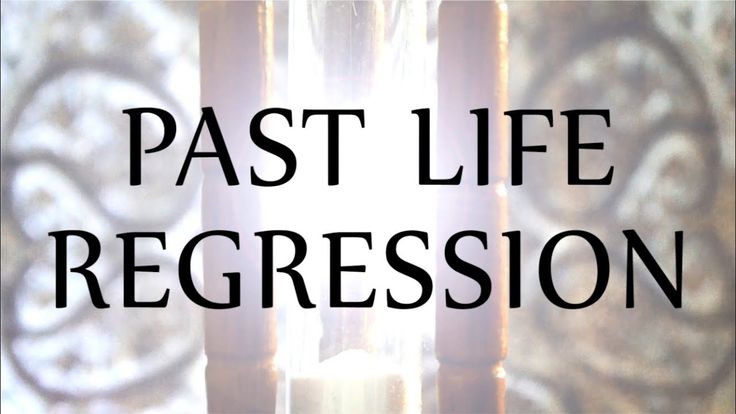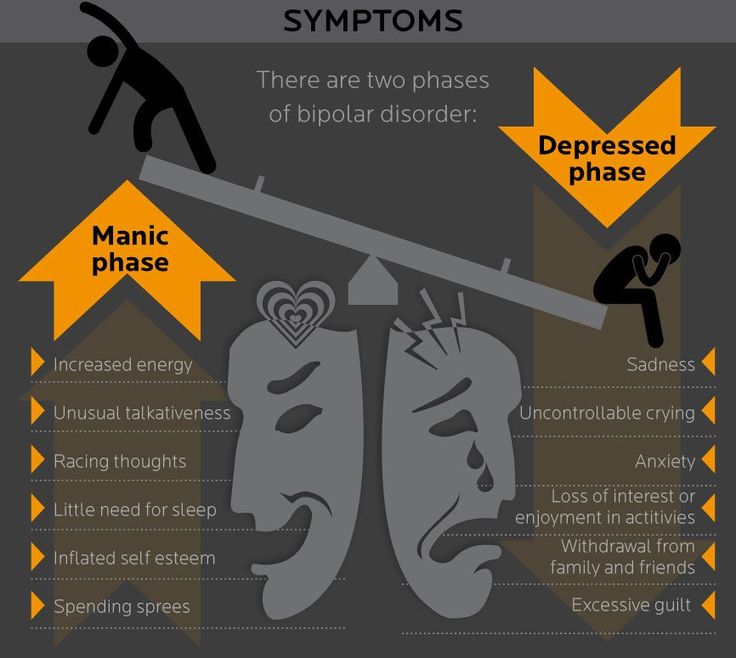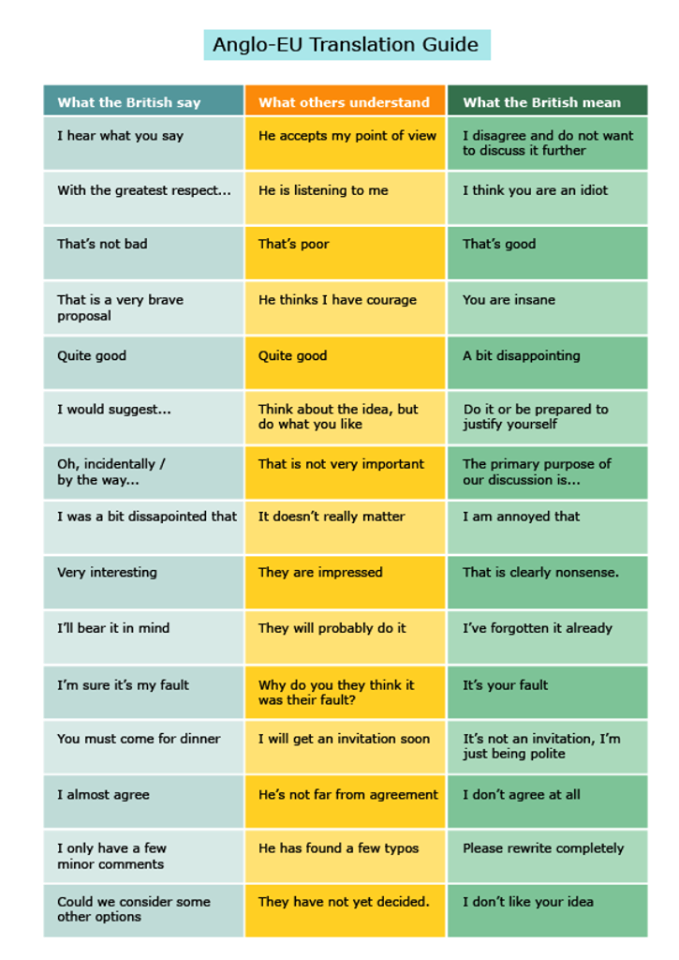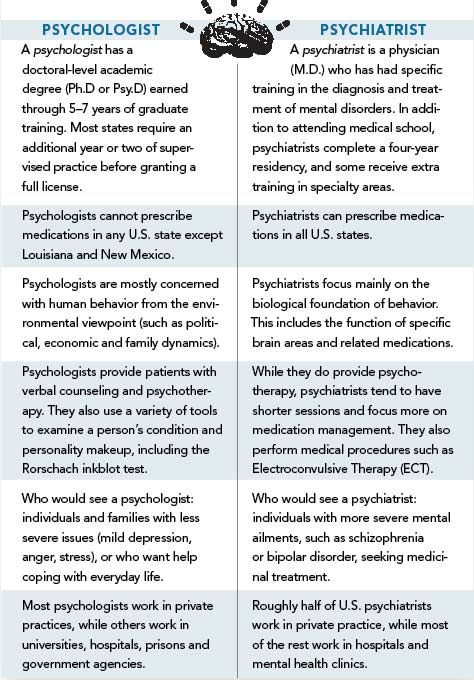Hypnotic regression therapy
Hypnotic Regression and Healing the Unconscious Mind
Our mind is uniquely prepared to experience the continuity of time. While we are advised to live in the here and now, we all wander into the past or future.
Our memory and imagination vary greatly from person to person. Even if you can remember every detail from your life, nobody can recall how these events affected them. The mind automatically filters out certain experiences out of normal memory.
So, what kind of stuff becomes unavailable to our own thinking? Actually, there is a lot of information that never gets stored in our memory banks in the first place but, even more importantly, there are plenty of experiences that cannot be recalled because they are repressed — kept out of our awareness somehow. These are the memories worth analyzing because they sit there, deep inside the mind, affecting our lives nonetheless.
Hypnosis is one of the best ways to help people access those “buried” memories. Everyone has memories or experiences in their unconscious mind that they may not be able to recall but still play a significant role in everyday life. Hypnotic regression is the process by which you enter a trance and recall material from deep inside that is normally not available to the conscious mind.
Hypnosis enables the mind to travel more easily across the dimension of time. Regression is the process by which the hypnotist guides you back through time to particular events that need to be examined. It is actually relatively simple; you are suggested to travel back through the years to recall specific memories.
There are a number of effective techniques to facilitate this process. The hypnotic trance enhances your ability to remember events that you otherwise cannot recall. A good question is, "Why is it difficult to recall some memories and not others?" Part of this answer can actually be attributed to Freud who described the function of the unconscious mind in great detail. Although many of Freud’s theories have been widely contested, the idea that the mind is made up of different levels of awareness and activity has been substantiated by empirical research and the observation of countless experts in psychology.
The research into the formation and use of language demonstrates “unconscious” levels at which words, thoughts, and sentences are created. This deeper unconscious sphere of mental activity can be compared to an iceberg — the large bulk of which is out-of-sight beneath the ocean surface. Similarly, your mind has many activities that operate outside your awareness for good reasons. The brain evolved to economize our focus of attention to limit the amount of what is in our awareness. Consequently, there can be a large amount of mental stuff that you are not aware of but may still have an important function.
Regression can be used to help recall events from the other night or from any point of your lifetime. It can help you remember specific details of an event or even better, to observe it objectively and to understand its meaning and significance. It certainly can be a very powerful psychological tool to dive into the deeper parts of the mind.
The real problem is that we all experience a variety of events that were unpleasant, painful, embarrassing, or just difficult to cope with, which sometimes push these memories out of the conscious mind down into that hidden reservoir of the mind — the unconscious.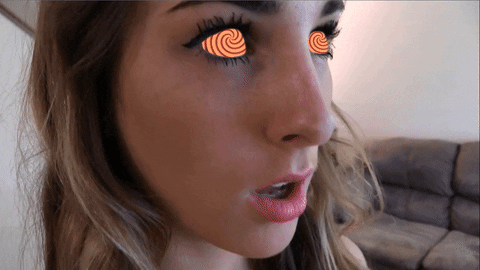
These can be traumatic experiences, or just awkward ones that we do not want to remember or cannot recall because they were repressed out of awareness. Everybody has memories buried in the unconscious. Most of these memories are not that scary or horrible but some can be very uncomfortable to face. Many of the more dramatic things that happened to you as a child are resting in your unconscious. Even if you can remember these events, some of their effects remain unobservable to the average person.
That is where hypnosis comes in. Through a trance, we can open the door to the unconscious mind and help find the conflicts, turmoil, hidden pain, expose the obstacles, the self-sabotage, and reveal the invisible connections between events and feelings.
Regression done by a skilled professional can be very healing and transformative. It often brings up new insights into how your mind works and what really happened to you as a child. Most of the memories revealed are not tragic or horrific but, they often help heal the wounds or conflicts we experience in daily life. Occasionally, traumatic events can come up that require very skilled resolution. That is precisely why it is important that hypnotic regressions are performed by highly skilled doctors that know how to carefully dig for these memories without ever “planting” false memories into the person.
Occasionally, traumatic events can come up that require very skilled resolution. That is precisely why it is important that hypnotic regressions are performed by highly skilled doctors that know how to carefully dig for these memories without ever “planting” false memories into the person.
I have performed thousands of regressions on my clients and am often struck by the surprising nature of the material that is recalled. People can recall the most subtle small details of an event when they were just 5 years old that they never thought of before. This is how much of the healing in the mind occurs, revealing the unconscious thoughts, memories, conflicts, etc., to the awareness. The therapist must help the client resolve these issues often during the trance, and then afterwards a significant amount of counseling may be required to help this person utilize these insights and new awareness in constructive and beneficial ways.
Healing the unconscious mind refers to the process of eliminating unwanted and unnecessary problems in the mind that block you from enjoying a healthy, happy and fulfilling life. Many things can rob us of positive progress in our lives. One area that should be considered, when other explanations have been exhausted is memories buried in the unconscious mind. Hypnosis and regression therapy, in skilled hands, can often help remove blockages and heal suffering. It can be a quick process or it may take considerable time and work; that depends on many factors. In short, this technique can often uncover the material hidden beneath the surface.
Many things can rob us of positive progress in our lives. One area that should be considered, when other explanations have been exhausted is memories buried in the unconscious mind. Hypnosis and regression therapy, in skilled hands, can often help remove blockages and heal suffering. It can be a quick process or it may take considerable time and work; that depends on many factors. In short, this technique can often uncover the material hidden beneath the surface.
If you have experienced many psychological problems in your life, and all your efforts to resolve these issues in the direct conscious manner have not been successful, then trying hypnotic regression may offer you a potential solution. First, you must be prepared to dig deeper and be willing to confront whatever comes up. Secondly, you must do this with a qualified expert with whom you are prepared to invest the time and energy to go through this process. Thirdly, remain open and curious to utilize whatever emerges to resolve the problems and move forward in your life. I am certain that every person can make such positive progress.
I am certain that every person can make such positive progress.
Best wishes.
JR
History, Types, Benefits, and Controversies
Regression therapy is an intervention that focuses on uncovering subconscious memories, or traumas, from your past.
Have you ever struggled through something you just couldn’t find the words for? Or noticed that you have behaviors that you can’t rationalize? If so, you’re not the only one.
It’s possible to have fears or phobias that you don’t know the cause of, or feelings of guilt or shame that you just can’t seem to understand. If these unexplained scenarios cause you discomfort, affect your health or relationships, it may help to try and access the cause of your reactions and work on creating a plan to heal from it.
Regression therapy aims to find out the root cause of your present-day thoughts and reaction. Therapists who use this practice may employ techniques like hypnosis to unlock subconscious memories that are directing your current behavior.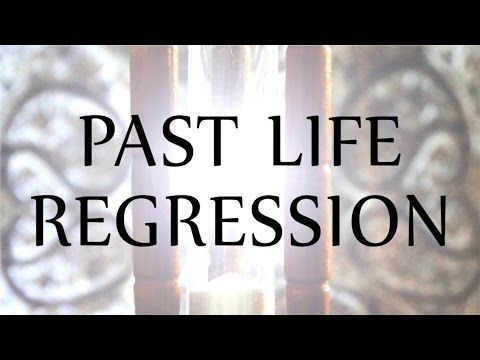
Regression therapy remains controversial, as there is limited research to support its use and some experts believe that it could lead to false memories.
Regression therapy is a form of therapy that combines hypnotherapy and psychoanalysis techniques to identify past events, memories, and trauma that could be negatively impacting you in the present.
According to “The Art of Hypnotic Regression Therapy: A Clinical Guide,” practitioners of regression therapy believe that the subconscious mind can repress trauma inflicted at an age when the mind was incapable of appropriately processing it.
In regression therapy, the therapist uses hypnosis to bring memories to the surface — often childhood memories specifically.
“The therapy is based on core psychological principles of the conscious and subconscious and studies the effects of stored memories on the psyche,” shares Bryan Bruno, MD, medical director at Mid City TMS in New York City.
Hypnotherapy and psychoanalysis — the core techniques used in regression therapy — rose to prominence in the 1950s, while regression therapy developed in the late 70s and early 80s.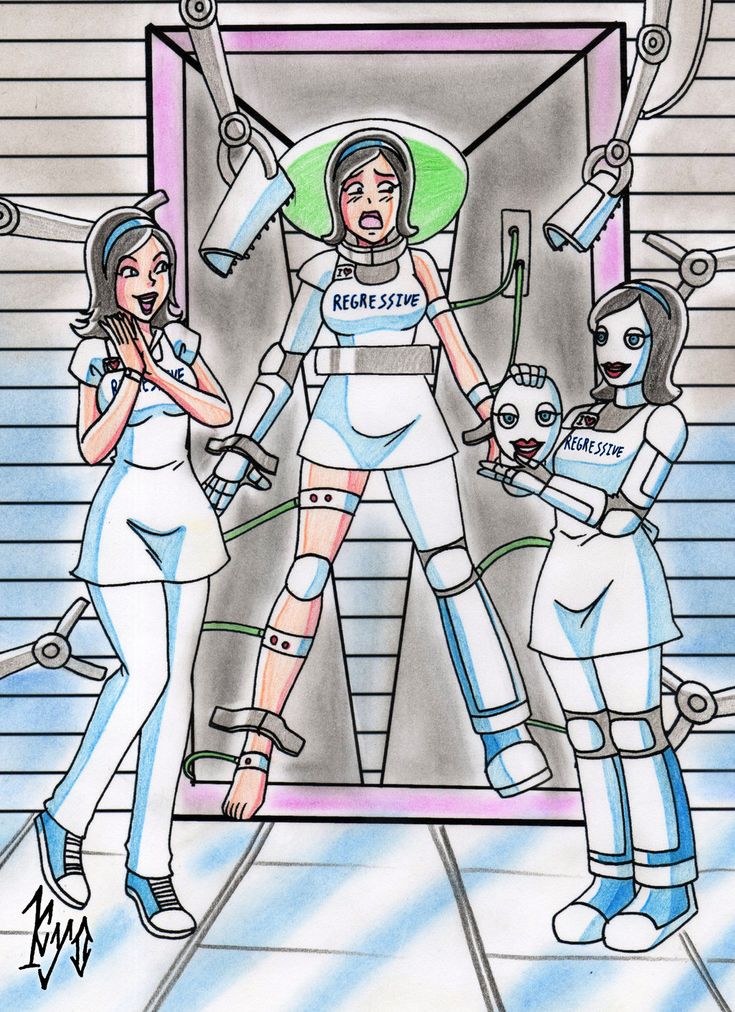
Regression therapy is primarily used to help you better understand past experiences that could affect your emotional reactions in the present. In many cases, “regression therapy is used to help those who’ve had traumatic experiences as children determine how those memories affect their behavior now,” explains Bruno.
When asked about who practices this type of therapy, Bruno said that “therapists who practice regression therapy typically specialize in trauma recovery, especially in resolving early childhood trauma or determining the causes of current phobias or feelings of guilt and shame that have no recognized cause.”
There are three main types of regression therapy:
Hypnotic regression therapy
This is the most well-known type of regression therapy practice. It uses hypnosis to help you access your subconscious mind — and any memories of trauma that may be stored there.
Age regression therapy
“This style of regression therapy aims to bring you back to a childlike state of mind by using breathing exercises and pointed questions,” explains Bruno. Like hypnotic regression therapy, this treatment style intends to unlock any forgotten trauma.
Like hypnotic regression therapy, this treatment style intends to unlock any forgotten trauma.
Past life regression therapy
This version of regression therapy is practiced by those who believe trauma in past lives affects the mind in the present. Due to its controversial (and unprovable nature), it is not recognized by most hypnotherapists.
There can be many benefits to unlocking your subconscious through memory regression, including resolving past trauma and uncovering where certain (previously unexplainable) behaviors come from.
“By understanding how and why a patient reacts a certain way to trauma improves the patient’s relationship to themselves, and it gives them a clearer picture of how to improve,” says Bruno.
“Regression therapy also helps therapists to get to the core of their patient’s issues so that they can develop an individualized treatment for the patient quicker.”
Regression therapy may help individuals get to the bottom of:
- fears or phobias that seem to have no explanation
- feelings of guilt, shame, and self-consciousness with no known cause
- recurring relationship challenges
- prevalent intimacy issues
It is important to note that while it’s possible to experience positive results from regression therapy, the benefits are not yet backed by scientific evidence.
Though many support this therapeutic practice, some risks and controversies surround regression therapy. For one, “it is hard to determine if the regression itself improves a patient’s state of mind or if growth is due to other factors, like a placebo,” says Bruno.
While more research still needs to be done on regression therapy, a 2017 study argues that past-life regression, specifically, is unethical. The study’s main reason for deeming past life regression unethical is that it’s not evidence-based. Similarly, many in the medical community dispute the benefits of regression therapy.
One of the most well-known controversies around the practice is the risk of false memories, and it’s one of the reasons that the American Psychological Association considers age regression therapy controversial.
“There is a chance that a therapist’s or hypnotherapist’s leading questions can lead to the implantation of false memories that fulfills the therapist’s or the patient’s desired diagnosis,” explains Bruno, who also identifies another risk: unqualified practitioners.
“There are many people who claim to be trained hypnotists but do not have any medical or therapeutic training — therefore, they are not trained or certified to diagnose and treat any supposed mental health conditions,” says Bruno.
Controversies aside, it’s up to you to weigh the risk and the benefit of life regression therapy. You choose what is ultimately the most helpful to your healing, and that can look however you need it to — even an alternative therapy.
There are many insights and answers that could be found in your memories, and regression therapy could be one way to explore that.
If you’re curious and thinking about trying this type of therapy, consider seeking out a hypnotherapist that is also licensed to avoid some potential risks. And remember, there’s nothing wrong with wanting to try an alternative approach, as long as you educate yourself about it.
You deserve to get to the bottom of what’s negatively affecting you, and you don’t have to keep running around in circles trying to find an explanation. There’s a chance that that explanation is inside your subconscious, and that once you uncover it, you can finally heal from it.
There’s a chance that that explanation is inside your subconscious, and that once you uncover it, you can finally heal from it.
Regression Hypnotherapy - how it works, what it does and more
Some of my clients report that they have gone through other therapies, put months of work into them, learned something and acquired some useful skills. The reason they come to me is because they still feel the same way.
Regression Hypnotherapy helps my clients overcome emotional problems by processing past negative experiences in a safe environment so that they begin to feel good.
Regression Hypnotherapy is an effective treatment for anxiety, depression, phobias, trauma and more. Find out what it does and how it works!
What is regression hypnosis?
The purpose of regression therapy is to find out how past events in your life affect your current life. Hypnotic regression therapy uses hypnosis to connect current issues to events in your past.
These past events are related to the root cause of the ongoing problems you are facing today. So, the goal of regression therapy is to understand the root cause of current problems.
So, the goal of regression therapy is to understand the root cause of current problems.
Although the events took place long ago, the beliefs formed then guide, guide, and sometimes limit your life, causing various problems.
Rational and unconscious understanding
You may have a good rational guess about how certain events in your past have affected who you are now as a person. However, hypnotic regression helps you go deeper and remember how these events emotionally affected you in the past.
Rational memories, or memories that you remember rationally, are limited to certain facts and lack completeness. But this does not mean that the information has been lost over time. Your unconscious stores much more complete and detailed information about your past.
The purpose of accessing these memories is to remember how you reacted to events in your past, how you understood them, and what beliefs you formed then under the influence of events.
What ages does regression hypnotherapy work with?
Events that affect your ideas about yourself and your life are usually formed before the age of 8–10 years . Events and environments in early childhood can make a big difference. Beliefs formed already in the early years are confirmed and strengthened in later years.
Events and environments in early childhood can make a big difference. Beliefs formed already in the early years are confirmed and strengthened in later years.
Traumatic events that occurred in adulthood may also play an important role and be treated with age regression therapy.
Benefits of regressive hypnotherapy
Neurology shows that your mind has a predictive function. This means that it doesn't just parse everything in your path. Your consciousness creates a limited and very selective personal perception of your life.
Your mind perceives what it expects to perceive. And these expectations are aligned with your past experiences and the beliefs you have formed about yourself and your life.
So when regression hypnotherapists use hypnosis to work through negative emotions about past experiences, it can change your current thinking, emotions, and behavior.
This therapy has been used successfully with clients who suffer from post-traumatic stress disorder (PTSD), anxiety, panic attacks, phobias, depression, overweight and other problems.
How does regression hypnotherapy work?
Regression hypnotherapy uses hypnosis to help people remember traumatic events and then process them.
Regression Therapy Methods
At the beginning of the session, the therapist puts you into a hypnotic state in which you can remember the event and release any fear or pain about it.
Uncovering past events that affect you today and releasing the emotions associated with them are only the first steps in regression therapy.
After this so-called exploratory work, you can become aware of the unconscious beliefs that actually limit you and cause problems.
These beliefs, formed in early childhood, were naturally influenced by complete dependence on your parents and/or other caregivers, limited understanding, and lack of ability to change the situation in which you find yourself.
The situation you are in now as an adult is completely different from that. You understand much better what happened then, you are independent and able to influence situations in your life.
Regression Hypnotherapy helps you correct and renew your beliefs according to your current abilities as an adult.
New inspiring beliefs effortlessly create a new way of seeing your life, thinking, feeling and acting.
After a successful regression, the therapist will bring you back to today.
History of Regression Therapy
Previously, hypnotherapy had no rational explanation and was therefore abandoned and replaced in the late 19th and early 20th century by psychoanalysis.
But then, hypnotherapy and regression therapy were of particular benefit during the First and Second World Wars. The long-term psychoanalysis popular at that time could not satisfy the needs of injured soldiers and officers..
Hypnotherapists then used regression therapy with great success to bring back vivid memories of traumatic war scenes. While watching war scenes under hypnosis, soldiers could relive repressed emotions in a safe environment, release them, and free themselves from post-traumatic stress disorder.
Rapid Transformational Therapy
Renowned hypnotherapist Gil Boyne has developed and taught transformative therapy to thousands of his students. Transformative therapy uses age regression hypnotherapy to identify the root cause of the problems experienced.
Marisa Peer, one of Gil Boyne's students, teaches her own type of hypnotherapy, Rapid Transformational Therapy or RTT, based on transformative therapy. Both therapies use age regression hypnotherapy with great success.
I completed an advanced RTT course at Marisa Peer's school. My knowledge of hypnotherapy was enhanced by training in neo-Ericksonian hypnosis at the Mike Mandel Hypnosis Academy (MMHA). If you are interested in using regression hypnotherapy to release old emotions that are negatively affecting your current life, sign up for a free call with me:
Book a Consultation
Is regression therapy dangerous?
Experiencing strong negative emotions such as fear is considered one of the risks of regression hypnotherapy.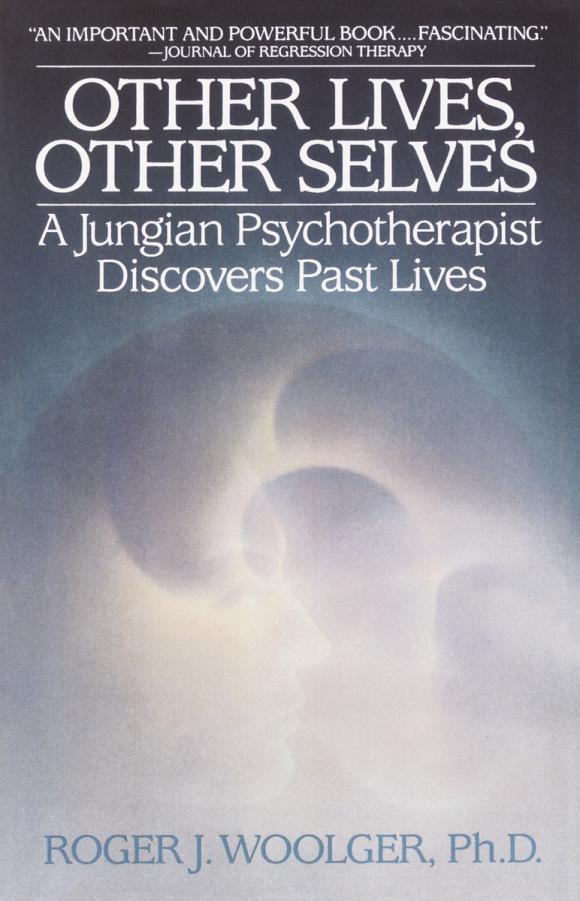 As shown above with World War veterans, dissociation from strong emotions during traumatic events caused PTSD. And reassociation under hypnosis offered quick and permanent recovery. In this case, you need a hypnotherapist with experience in regression.
As shown above with World War veterans, dissociation from strong emotions during traumatic events caused PTSD. And reassociation under hypnosis offered quick and permanent recovery. In this case, you need a hypnotherapist with experience in regression.
However, regression hypnotherapy is actually quite safe and non-invasive. In fact, it is so safe that people feel relaxed for most of the session.
Another commonly discussed disadvantage of regression is the potential for false memories . First, there are no right memories. All memories are limited to your personal perception of any event in your life. If the memory is related to your childhood, then it will be further distorted due to the limited understanding of the child. This is what actually causes problems in adulthood.
Moreover, the recollection of old events in adulthood can impose additional interpretations on memories and thereby distort them even more.
And it is the task of the hypnotherapist to help you free yourself from the burden of old memories and their influence on you. In doing this, the experienced hypnotherapist takes special care not to introduce further falsification of memory on his part by suggesting or interpreting any information.
In doing this, the experienced hypnotherapist takes special care not to introduce further falsification of memory on his part by suggesting or interpreting any information.
Therefore, it is important to choose a hypnotherapist who is trained, certified and experienced in regression therapy. It is helpful if the therapist already has experience with the problems you need help with.
Does Regression Therapy Work?
Regression therapy can bring relief and healing from depression or anxiety, weight loss and more.
For example, Ashley, one of my clients was looking for a solution to her stubborn excess weight. She applied various methods of treatment, and they helped her to some extent.
With Ashley we worked on the insecurities associated with adverse events in her childhood. Regression hypnotherapy helped her feel secure and then, naturally, she was able to reach her ideal weight.
I cannot recommend Olga enough for everything you are willing to go through in life.

When I came to her, I thought I came for one problem, but we found that the main problem was safety and weight retention, which I could never get rid of, no matter what I did.
After working with her in just one session, I was able to lose 10 pounds in a month, and my habits, confidence and general attitude towards myself and my body turned around to all 360 .
To say that my life has completely changed is to say nothing. I don't even know who I was before the session with Olga. 10/10 recommend hiring her ASAP. I am already looking forward to working with her in our second session.
Ashley, TUF Woman Table, USA
More customer testimonials can be found here.
Book a Consultation
FAQ Regression Hypnotherapy
How many regression sessions should I attend?
One to three sessions of deep regression work should be enough to address the root causes of one particular problem.
The same root causes can cause multiple problems. Thus, you may notice improvements with other problems as well.
In doing so, you may want to acquire skills to renew your thinking and behavior so that you can further improve your life. Other types of hypnotherapy, as well as CBT and NLP, are excellent for this purpose.
How much does regression hypnotherapy cost?
Watch my therapy cost video here.
Is it possible to undergo regression hypnotherapy online?
Yes, regression hypnotherapy is effective online. You can experience all its benefits safely from the comfort of your home.
Is regression therapy evidence-based?
Regression hypnotherapy has been known for a long time, and now there is a sound scientific explanation for its effectiveness. Human consciousness works as a projection of past experience onto the current life. This happens without any conscious effort on your part, ie. unconsciously.
unconsciously.
Therefore, correcting the understanding of the past under hypnosis completely changes your current life experience and allows you to live a better, happier and more fulfilling life.
What is past life regression?
Past life regression is practiced by those who believe that past life experiences affect you in the present. It is not widely accepted by hypnotherapists because it cannot be proven.
Conclusions
Regression hypnotherapy helps to overcome emotional problems by processing the experience of the past in a safe environment.
Regression hypnotherapy helps you change your limiting beliefs and empowers you.
Regression therapy can be effective in treating anxiety, depression, post-traumatic stress disorder, insomnia, self-esteem, and more.
References
- Budson, Andrew E.; Richman, Kenneth A.; Kensinger, Elizabeth A. Consciousness as a Memory System.
 Cognitive and Behavioral Neurology: October 3, 2022 – Volume – Issue – 10.1097/WNN.0000000000000319/ doi: 10.1097/WNN.0000000000000319
Cognitive and Behavioral Neurology: October 3, 2022 – Volume – Issue – 10.1097/WNN.0000000000000319/ doi: 10.1097/WNN.0000000000000319 - Barrett, L. F. (2017). How emotions are made: The secret life of the brain. Houghton Mifflin Harcourt.
- Smith, G. Elliot., Pear, T. H. (1918). Shell shock and its lessons. 2d ed. Manchester: University press.
- Brown, W. (1923) Clinical: William Brown. Psychopathology and Dissociation. British Medical Journal, Vol. I, 1920, p. 139 et seq. International Journal of Psychoanalysis 4:335
- Boyne, Gil, Transforming Therapy a New Approach to Hypnotherapy (August 1989) ISBN 978-0930298135
Types of hypnosis. Hypnotic regression
Regressive hypnosis is a special technique that helps to put a person into a state of trance with the opportunity to observe their past earthly incarnations. This technique is actively used by psychotherapists to eliminate many psychological problems. Parapsychologists use regressive hypnosis to confirm the phenomenon of reincarnation (reincarnations of the soul).
Parapsychologists use regressive hypnosis to confirm the phenomenon of reincarnation (reincarnations of the soul).
The main purpose of the method is to immerse a person into a state of trance to find hidden information in his subconscious, which is not possible to obtain in a normal state.
Usually people interested in regressive hypnosis want to recover the true information about their previous lives on Earth.
Currently, in psychotherapy, the technique of regressive hypnosis is used to find those starting points in the client's past that provoked the appearance of a certain problem in him. In this case, the hypnologist asks the subconscious mind questions drawn up according to a special scheme.
In the course of a regression therapy session, the specialist maintains a connection with his patient with the help of his higher "I", that is, an appeal is made to the unconscious mind. Thanks to the state of regressive trance, a person begins to recreate in memory a chain of events from his past earthly incarnations. According to official medicine, these memories represent partial or complete information about situations that took place in the real life of the client, but about which he does not remember anything.
According to official medicine, these memories represent partial or complete information about situations that took place in the real life of the client, but about which he does not remember anything.
It doesn't matter how the information extracted from the depths of the subconscious during regression therapy sessions is explained. The main thing is that with their help it is possible to establish those situations that are the main cause of mental anomalies and somatoform disorders of the client.
The technique of regressive hypnosis "opens the eyes" of a person to the real nature of his pathologies, he finds himself at the source of the problems that have appeared, he can find an explanation for many of his psychological disorders.
Thanks to this unexpected "insight", the activation of the body's hidden resources begins, self-healing occurs. Having returned to the past in a session of regressive therapy, a person realizes his mistakes of the past, he has the opportunity to change his wrong behavior.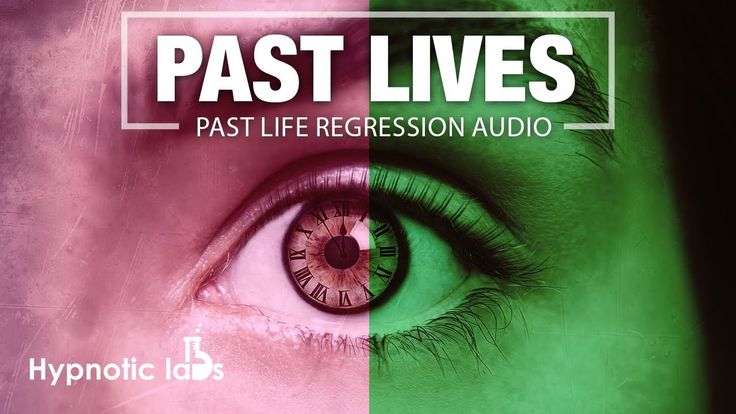 Self-confidence also increases, motivation for further actions appears.
Self-confidence also increases, motivation for further actions appears.
Regressive hypnosis technique
To bring a person into a state of altered consciousness, when it is possible to view past incarnations, one must undergo good preparation. The process itself takes place in the following stages:
- First, the patient is immersed in a trance state.
- Then he is asked a series of questions, with the help of which those facts of the past are found that led to the problem situation.
- Then the hypnologist makes changes to the situation in the past, fixes a new image in the subconscious and returns the person to the present moment.
In a state of regressive hypnosis, people easily remember and describe the details of their past incarnations. In some cases, they can even talk about their future lives.
Of course, many experts of official science are ardent critics of regression therapy. They call pictures of past incarnations "figments of the imagination" or self-hypnosis.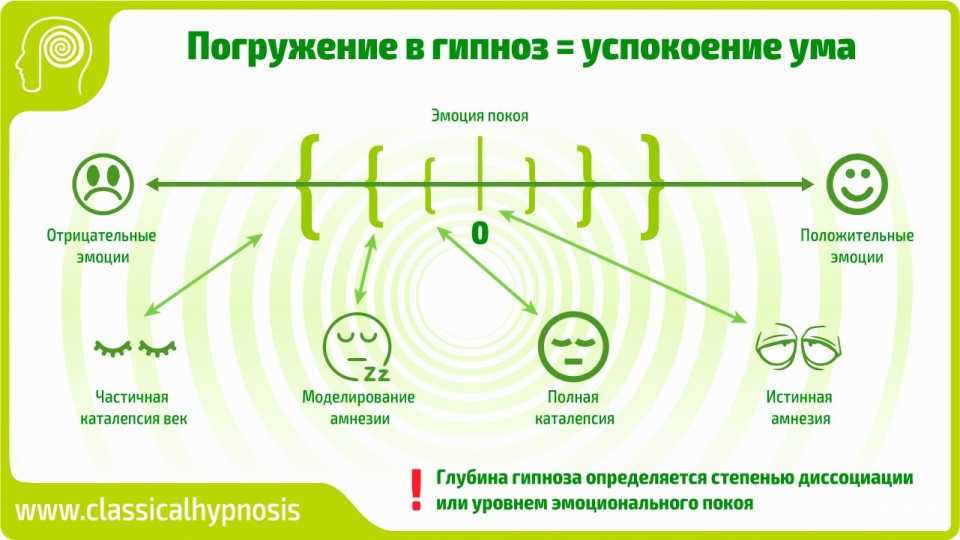
According to traditional medicine, information about past reincarnations cannot be stored in a person's memory (science also does not support the very idea of reincarnation).
We offer you regressive hypnosis video, which will tell you more about the features of this technique
Regressive hypnotherapy
But very many practicing psychotherapists were convinced of the effectiveness of the described method. They sent a person to past lives, forced them to relive unpleasant moments in order to get rid of them once and for all. After that, the quality of human life improved significantly.
Hypnotherapists-regressionists act as guides in this process, they are obliged to ensure the complete safety of therapy.
According to them, regressive hypnosis will help get rid of:
- chronic fatigue;
- sexual disorders;
- relationship problems;
- addictions to bad habits;
- self-doubt;
- psychological problems;
- overweight;
- stuttering;
- allergic reactions;
- depression;
- trouble falling asleep;
- neuroses;
- childhood injuries;
- various phobias.

Today this method is actively used in various esoteric trainings. At these seminars, you can both experience regressive hypnosis and learn its technique. Regression is also of interest to reincarnation researchers, Buddhists, Theosophists, Spiritualists, Hindus, Anthroposophists, and representatives of other religious movements.
Various forms of hypnosis are actively used in psychology, which in one way or another affect the subconscious of a person. Most of the methods are aimed at returning to the past. One of the most famous methods is regression. It is not recognized by everyone in the scientific community, because. based on the theory of reincarnation, which is highly controversial.
The concept of regressive hypnosis
The origins of this method lie in the concept of reincarnation - the doctrine of the transmigration of souls, which states that the essence of a person migrates to different bodies not only of other people, but also of animals.
Reincarnation has been popular since antiquity. She firmly took her place in some religions of the eastern direction.
Scientific studies do not confirm the existence of the phenomenon of reincarnation. Memories of a past life are recognized as fantasies that have nothing to do with reality.
Regressive hypnotherapy is based on the return of a patient suffering from psychological problems to past lives in which the source of the current problem must be found.
Regressive hypnosis can harm the patient's mental health due to errors in the work of specialists. You need to choose only proven professionals.
Access to past lives can only be obtained in a special state of consciousness (OSS)
Hypnosis does not work on all people. On the contrary, it affects some people too much: they become aggressive or inhibited. Memories of past lives often turn out to be fiction if a person has a well-developed imagination. Matches of childhood memories with invented pictures drawn by fantasy are possible.
Areas of application of regression sessions
In modern practice, age regression is used very often and not only by psychologists-hypnotologists. Directions:
- psychoanalysis;
- psychodrama;
- gestalt therapy;
- various trainings aimed at revealing the inner essence;
- personal growth trainings;
- neuroses of various nature;
- childhood injuries;
- all kinds of phobias;
- relationship difficulties;
- dependencies;
- weight loss.
Elements of the technique of self-hypnosis in one case or another in these directions bear fruit if they do not encroach on the free will of a person.
The mechanism of action of regressive hypnosis
Hypnotic techniques can be used by a psychologist who has sufficient qualifications, which is confirmed by experience. The patient must fully trust the specialist, without this it will not be possible to relax, and hypnosis sessions will not bring any benefit.
Stages of the regression session:
- immersion in a trance - when consciousness is in an altered state, half asleep;
- the specialist addresses the patient a series of pre-formulated questions about his past life, related to the problems that are bothering him now;
- analysis of the result, fixation on the most acute moments, their correlation with reality;
- creating the most suitable way of thinking for the patient, fixing them in his mind, working out a life scenario.
The degree of immersion in hypnosis depends on the patient's state of health, the seriousness of his situation, the skill of the psychologist, but in each case it is determined individually. Usually 2-3 sessions are enough, but more may be needed.
During the stay in a trance, the main burden falls on the patient. He is the main character who must return to the past, live certain segments of life anew, again face the negative. The psychologist is only a guide, but it depends on his skill how the patient will endure the session, whether he will be able to get out of the trance painlessly, and what attitudes he will receive for later life.
The psychologist is only a guide, but it depends on his skill how the patient will endure the session, whether he will be able to get out of the trance painlessly, and what attitudes he will receive for later life.
Positive and negative consequences of regression
Successful sessions of regressive hypnosis allow to achieve the following results:
- get rid of addictions, from psychotraumatic situations from the past;
- look at relationships with others in a new light;
- learn to overcome difficulties with the least damage to the psyche;
- clearly see the main life guidelines;
- get rid of fears that poison existence;
- overcome sadness after the death of loved ones;
- build relationships with family and friends.
There are a number of negative consequences that often occur after regression sessions:
- new psychological trauma due to mental overload - in addition to existing problems, childish grievances emerge, they can provoke a deep mental disorder;
- erroneous ideas about getting rid of past problems, which will again become aggravated with renewed vigor;
- dependence on the actions of a hypnotologist - a person's will is paralyzed, he cannot make decisions on his own.

The Benefits of Regressive Self-Hypnosis
Almost every person has problems that are caused by situations that have happened in the past. A person takes a lot into adulthood from childhood, including the negative. Often this happens unconsciously, but there is a chance to overcome this phenomenon if you master the technique of regressive self-hypnosis. By completely relaxing, you can immerse yourself in the memories that hurt, let them go with an effort of will and go through life calmly.
Conclusion
Regressive hypnosis, like any psychological practice, is ambiguous, depending on the qualifications of specialists and the characteristics of the patient. His methods are not suitable for everyone, but each person should be aware of its possible consequences before starting sessions, this will bring a positive result closer.
Seven keys to open doors that lead to the cause of a psychosomatic symptom.
Back in the 70s of the last century, a classification of potential causes of . And the work of Chick and LeCron (1968), as well as Hunter (2010) describes a theory according to which most of the reasons that can cause problems with the emotional perception of a person correspond to seven situations. In psychology, the list of attributions is known as the "seven psychodynamics of a symptom".
And the work of Chick and LeCron (1968), as well as Hunter (2010) describes a theory according to which most of the reasons that can cause problems with the emotional perception of a person correspond to seven situations. In psychology, the list of attributions is known as the "seven psychodynamics of a symptom".
1. Directive impression. This is the name of a belief that was imprinted into the brains of your interlocutor due to the undoubted authority of the source. It could be a parent, teacher, church, government, doctor, etc.
2. An old, unresolved problem. Many psychosomatic diseases (urticaria, migraine, gluttony, smoking, etc.) are symptoms of the accumulation of negative emotions. This is the situation when the subconscious (read - the body) of the interlocutor, as it were, tells him: “I don’t like what you are doing”, but he does it, obeying the mind. An emotional burden requires an emotional resolution.
3. Secondary benefit. Sometimes a symptom offers a "prize. " For example, a person is sick and receives a prize in the form of attention that he receives as a sick person. The desire to get sympathy, location, protection can act as the so-called "secondary benefit". There is a case when a woman, frightened in childhood by a man, changed her hormonal background and gained weight in order to get protection from the attention of men. However, anything can act as a “prize”.
" For example, a person is sick and receives a prize in the form of attention that he receives as a sick person. The desire to get sympathy, location, protection can act as the so-called "secondary benefit". There is a case when a woman, frightened in childhood by a man, changed her hormonal background and gained weight in order to get protection from the attention of men. However, anything can act as a “prize”.
4. Self-identification. Here there is a desire to be like a literary or movie hero, a real person (mentor or celebrity). Thus, your interlocutor determines who he is in this world, taking some model as a model.
5. Internal conflict. The symptom keeps the person in the state of one who does not allow himself to have his wants or needs met because they are contrary to his ethical beliefs. For example, the interlocutor may resist their own sexual desires through a subconscious desire for a repulsive appearance.
6. Past experience. This refers to past events that left traumatic memories. In psychology, they are considered as impressions that have formed false protective reflexes, which are observed in your interlocutor in the role of psychosomatic symptoms. Thus, a false result allows you to determine the initial impression is also false, that is, caused by an incorrect interpretation. The standard strategy of psycho-correction is based on this approach.
In psychology, they are considered as impressions that have formed false protective reflexes, which are observed in your interlocutor in the role of psychosomatic symptoms. Thus, a false result allows you to determine the initial impression is also false, that is, caused by an incorrect interpretation. The standard strategy of psycho-correction is based on this approach.
7. Self-punishment. This door leads to a situation due to which the interlocutor feels guilty, and the symptom itself is nothing more than the realization of a subconscious attitude towards self-punishment. Sometimes self-punishment acts as a subconscious attempt to avoid proper punishment.
ABC model in cognitive therapy. Phobia Treatment Methods
Psychosomatics of allergies | Feedback on the treatment of allergies through the re-experiencing of psychotraumas in hypnosis.
How to find the right door?
In order to classify the case you are dealing with, you need to conduct a test with the interlocutor based on his ideomotor reactions. This is a game in which you determine the body language in which you must receive answers. Usually the interlocutor does this with the index finger. His position should clearly indicate one of three possible answers: “yes”, “no”, “difficult to answer”. Accordingly, your questions should be formulated in such a way that the answer involves only two options: “yes” or “no”. Having agreed in this way, you start the game.
This is a game in which you determine the body language in which you must receive answers. Usually the interlocutor does this with the index finger. His position should clearly indicate one of three possible answers: “yes”, “no”, “difficult to answer”. Accordingly, your questions should be formulated in such a way that the answer involves only two options: “yes” or “no”. Having agreed in this way, you start the game.
The toolkit might look something like this:
Now I'm going to ask your subconscious mind a series of questions, and you'll answer yes or no, or "difficulty" by signaling with your finger.
1. Is the cause of your frustration related to the suggestion you received from an absolute authority?
2. Is the burden of unexpressed emotions the cause of your frustration?
3. Is the reason for your symptom lies in the benefit that comes from the position of a person with such a symptom?
4. Is the cause of your frustration due to the fact that you are an exact copy of someone you really want to be like?
5. Is the reason you're upset because you can't afford what you really want?
Is the reason you're upset because you can't afford what you really want?
6. Is the cause of your disorder in the past?
7. Is the reason for your frustration that you are punishing yourself?
In some cases, the answer "I don't know" should be considered as "yes". The game is a game, but no one bothers you, if necessary, ask for a voice clarification or clarification. Let this be a technical break.
Analysis of test results
If your interlocutor answers “yes” to question #2, then no further testing is required. It is only necessary to clarify: does the “inner mind” of the interlocutor want the problem to be solved with the help of? If the finger shows “yes”, then regression therapy can be planned. If “no”, it is better to try to connect the consciousness of the interlocutor with his subconscious. This is done directively, ordering the subconscious of the interlocutor to transfer the cause of the disorder to his mind. Then you need to bring the interlocutor out of hypnosis and discuss plans for the future with him.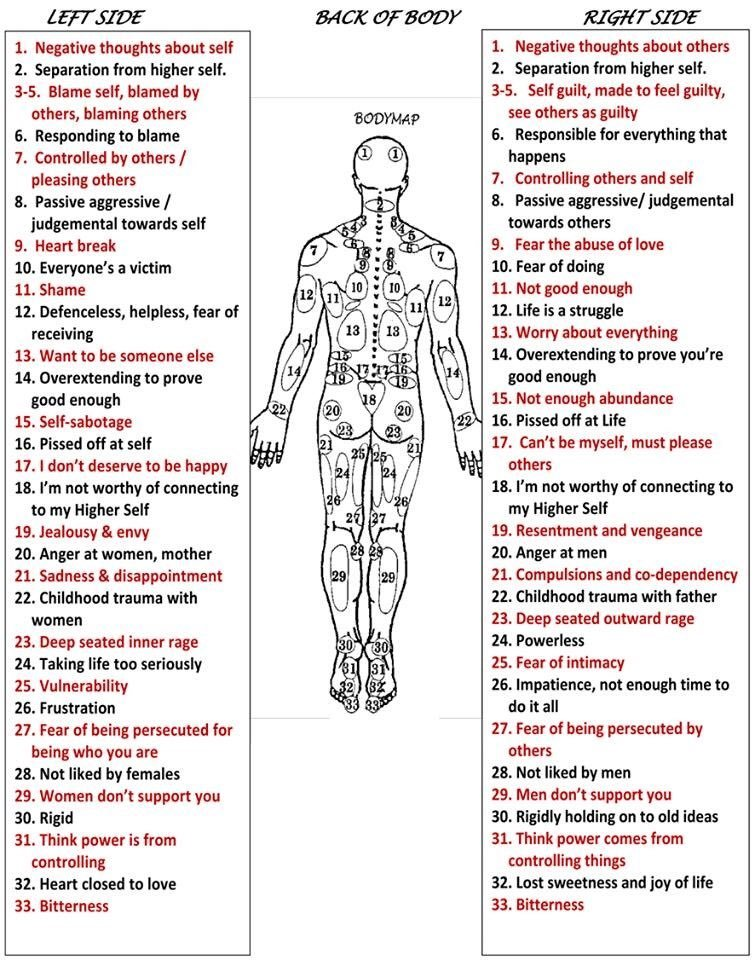 The fact is that emotional burden as a burden of unresolved problems may well require psychotherapeutic intervention. The interlocutor must know about this before deciding on something.
The fact is that emotional burden as a burden of unresolved problems may well require psychotherapeutic intervention. The interlocutor must know about this before deciding on something.
A positive answer to question 1 requires clarification. Understand what this "authority" is, get the whole picture without missing a single detail. Usually, in such cases, temporal regression is indicated to find, process, or remove the traumatic impression.
Answering "yes" to question 3 about the subconscious benefit that the interlocutor receives from the status of the patient requires an examination of the details. They will help you understand what kind of help he needs to get rid of the disease.
Question 4 (about self-identification) usually requires a regression to the impression that triggered the development of the morbid symptom. As a rule, we are talking about a sacrifice that the interlocutor made in order to become like or become closer to the subject of imitation.
A positive answer to question 5 will require your interlocutor to make a decision: either "partial therapy" or "regression." Let him choose at the subconscious level, which will determine exactly what is best.
Question #6, if yes, usually requires regression.
Question #7, if answered yes, there may be options: regression, and/or "parts therapy", and/or verbalization, and even referral to a specialist in marriage or family therapy. Keep in mind that punishing another person may be perceived by your interlocutor (or rather, his subconscious) as a “secondary benefit”. Thus, question number 7 can correspond with question number 3. If there is a suspicion, specify
Regression
Regression (lat. Regressus - backward movement) - a protective mechanism, which is a form of protective behavior in a critical situation, when an adult person unconsciously acts like a child who is confident in his safety. The regressive state is characterized by infantile perception - gullible and unconditional, therefore the phenomenon of regression is used in hypnotherapy as a way to access subconscious reactions, through which psychocorrection is carried out. This method is called age regression. The hypnotic phenomenon of regression is that the interlocutor relives events from his past. In the case of intense age regression, the event is re-experienced with such force as if it were happening at the present moment, which is accompanied by the release of oppressed emotions. It is believed that they form the plans for future pathologies at the somatic (bodily) level, therefore, getting rid of unhealthy mental energy from ancient times was considered the basis of any recovery, and the procedure of getting rid of it was called catharsis (other Greek κάθαρσις - “elevation, purification, healing” ).
This method is called age regression. The hypnotic phenomenon of regression is that the interlocutor relives events from his past. In the case of intense age regression, the event is re-experienced with such force as if it were happening at the present moment, which is accompanied by the release of oppressed emotions. It is believed that they form the plans for future pathologies at the somatic (bodily) level, therefore, getting rid of unhealthy mental energy from ancient times was considered the basis of any recovery, and the procedure of getting rid of it was called catharsis (other Greek κάθαρσις - “elevation, purification, healing” ).
In hypnology, there are many techniques for achieving regressive states of a person. All of them come down to a search in the memory of a suggestive recipient of a starting psychotrauma, which in the special literature is called the “initial sensitizing event” (PSS). The techniques are different, because the individuality of the interlocutor, ideally, requires the creation of a new unique technique for it, intended only for this soul. Experienced and most talented hypnotherapists do this, but we'll look at the classic version here. Its authors are Konstantin Platonov and Alexander Luria, who, back in the 20s of the last century, invented a temporary regression used in the study of changes in a person's personality under the influence of hypnosis. According to some reports, this level of hypnology is still unsurpassed, but for us it remained unknown, since these works were strictly classified in the Soviet Union. They found a second life in the work of American psychologists John and Helena Watkins, published in 1997, this way of mental travel, which another American psychologist Charles Tebbets called "sensory connection", and another classic of the American Roy Hunter - "affective bridge". The last name was established in the specialized literature.
Experienced and most talented hypnotherapists do this, but we'll look at the classic version here. Its authors are Konstantin Platonov and Alexander Luria, who, back in the 20s of the last century, invented a temporary regression used in the study of changes in a person's personality under the influence of hypnosis. According to some reports, this level of hypnology is still unsurpassed, but for us it remained unknown, since these works were strictly classified in the Soviet Union. They found a second life in the work of American psychologists John and Helena Watkins, published in 1997, this way of mental travel, which another American psychologist Charles Tebbets called "sensory connection", and another classic of the American Roy Hunter - "affective bridge". The last name was established in the specialized literature.
Hypnosis: doctor's review of the treatment of allergies and social phobia with hypnotherapy
Hypnotherapy training: immersion in hypnosis, search for psychotrauma, abreaction and rethinking
Affective bridge
This technique is used when the client's current problem is related to strong emotions. As a rule, it returns the client directly to the trauma due to the ability of the person's feelings to return him to the time when he experienced them for the first time. In other words, the affective bridge technique is based on the ability to activate a memory through an emotional, sensual, or affective impulse. It includes three steps:
As a rule, it returns the client directly to the trauma due to the ability of the person's feelings to return him to the time when he experienced them for the first time. In other words, the affective bridge technique is based on the ability to activate a memory through an emotional, sensual, or affective impulse. It includes three steps:
1. Suggesting to the interlocutor that he feels an emotion or feeling that accompanies his bouts of today's upset.
2. Suggest that the feeling/emotion will become more intense as you count from 1 to 10. 10 to 1.
The Affective Bridge is based on the idea of connecting our feelings and emotions to our past. Emotions/feelings are like a rope with associations that we establish between the impressions we receive. Often we remember events based on the mood we were in at that moment. This phenomenon is often experienced automatically when a person listens to an old song or looks at an old photograph. Feelings in that moment can bring him back to the days and hours when he first experienced them.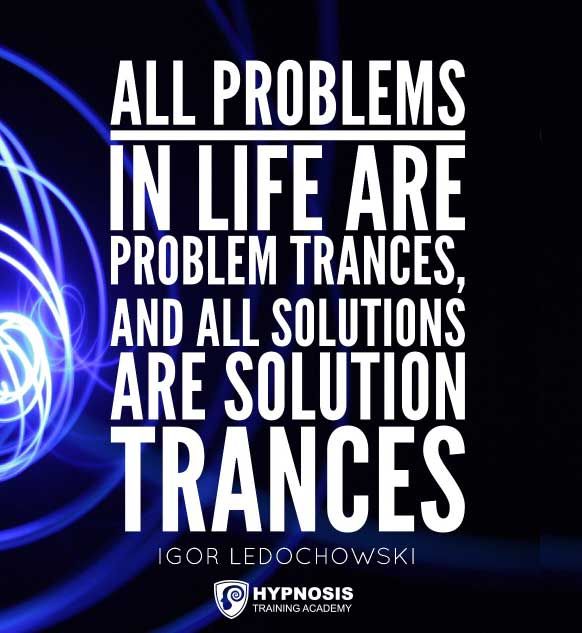 Considering that feelings and emotions are forms of psychic energy that sets a person in motion, one must understand that feelings and emotions, like a flame, can exist not only in a fireplace and in a lighter. They can be of a wild nature, engulfing a person like a fire, which completely paralyzes his life activity, if habits are not developed, due to which this energy is utilized. There is a theory (Cal Bunyan, Callahan and Trubo, Watkins) according to which feelings and emotions vibrate at different frequencies and amplitudes. Due to this, each emotion/feeling resonates with homogeneous emotions/feelings stored in memory as memories. This principle was used by S. Freud in the free association technique he created, which has remained the cornerstone of psychotherapy to this day: the patient issues free associations about his own complaints, answering questions like “What does this remind you of?” To raise to the surface associations and memories allow him feelings and emotions that continuously connect the past with the present.
Considering that feelings and emotions are forms of psychic energy that sets a person in motion, one must understand that feelings and emotions, like a flame, can exist not only in a fireplace and in a lighter. They can be of a wild nature, engulfing a person like a fire, which completely paralyzes his life activity, if habits are not developed, due to which this energy is utilized. There is a theory (Cal Bunyan, Callahan and Trubo, Watkins) according to which feelings and emotions vibrate at different frequencies and amplitudes. Due to this, each emotion/feeling resonates with homogeneous emotions/feelings stored in memory as memories. This principle was used by S. Freud in the free association technique he created, which has remained the cornerstone of psychotherapy to this day: the patient issues free associations about his own complaints, answering questions like “What does this remind you of?” To raise to the surface associations and memories allow him feelings and emotions that continuously connect the past with the present.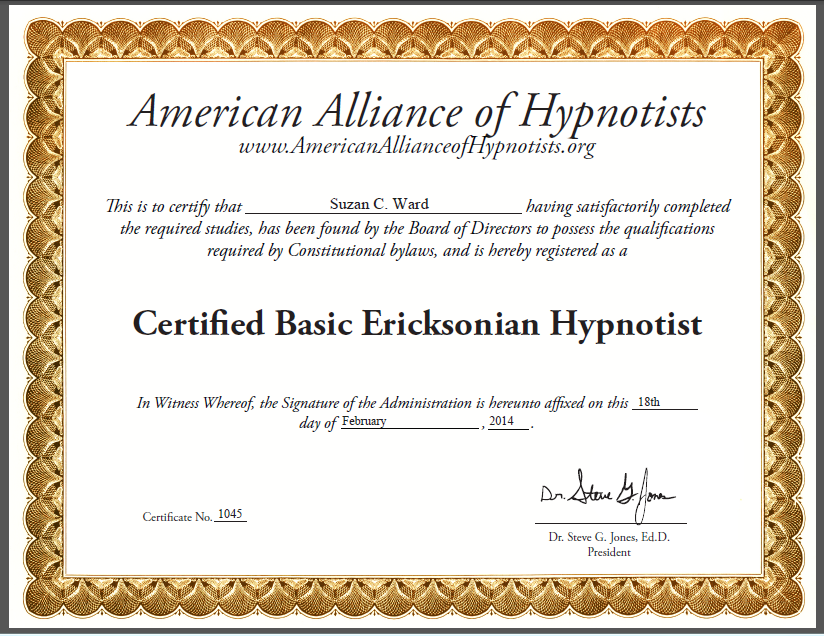
Standard script "Affective bridge"
Imagine that you are in a situation where (brief description of a psychosomatic attack). As I count from 1 to 10, go deep into the feelings and emotions you experienced during the attacks and feel them strongly and safely when I say "10." Number 1 - let's delve into our self-esteem! 2 - let emotions and sensations grow in strength with each new number! 3 - even more! 4- even stronger! 5 and 6 - you experience emotions, feelings and sensations more and more fully as you pronounce each new number: 7,8,9,10! You are full of this emotion and this feeling in full, bright and reckless, remaining in complete SAFETY ... Now, when I count from 10 to 1, remember when you experienced this state for the last time. 10,9,8 - open the closest attack in time, then the next one that occurred earlier, then even earlier 7,6,5 - you move from attack to attack, delving into your past from today's age to youth and infancy. 4,3,2 - in a chain of attacks during which you experienced the same feeling, emotion, sensation, you reach the very first case when you first experienced this state. 1! You are who you were that year and that day. You think and feel the same as you thought and felt then. What do you see and hear? What is going on around you? Where are you at?
1! You are who you were that year and that day. You think and feel the same as you thought and felt then. What do you see and hear? What is going on around you? Where are you at?
Observe the interlocutor carefully. If it enters abreaction quickly, the count should be faster. If the interlocutor resists, is inclined to suppress emotions, one must count more slowly, filling the countdown with verbal images that are designed to awaken the imagination and emotional-sensual sphere of the interlocutor.
An example of an "Affective Bridge" script for an interlocutor with a skeptical (analytical) mindset, experiencing an irrational fear of air travel.
Imagine that right now you are sitting in an airplane that is about to take off. You KNOW what it's like! And now, when I will count from 1 to 10, you will deeply feel what you feel and experience at this moment. You will experience these emotions and sensations as intensely and absolutely safely as I call the number 10.
So, number 1 - the plane is approaching the taxiway to take off. You hear the noise of an airplane, see a piece of the take-off field in the window and feel the approach of an unpleasant state that you always experience during takeoff.
2,3 – dive deeper into this state. The speaker in the cabin speaks words of welcome, and you feel the tremors from the movement of the aircraft.
Number 4.5 - with each new number your feelings become thicker, denser, they fill you like water on a sponge, leaving no empty space.
Digit 6.7 - You hear the sound of the engine afterburner when the plane is ready to take off.
Numeral 8.9 - feels the jolts and shaking when the plane is running for takeoff. They accelerate as the takeoff speed increases.
Number 10 - The jolts suddenly stop and you push into your seat as the plane goes higher and higher into the sky. You experience the peak of sensations associated with takeoff. Your feelings and emotions are open, they are not restrained by anything and at the same time they are safe.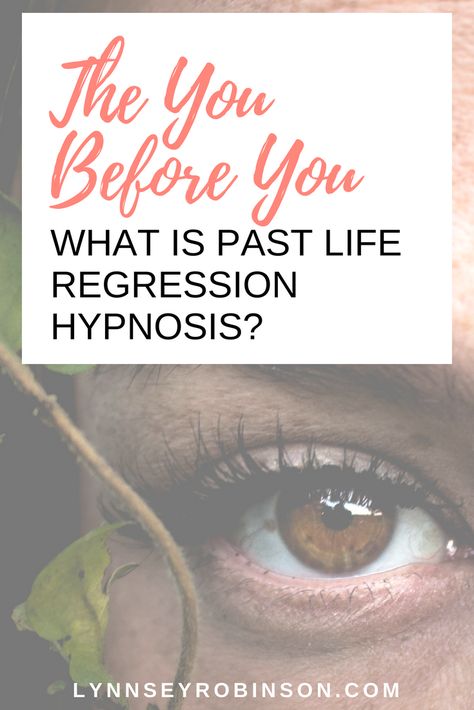 Your emotions do not threaten anything.
Your emotions do not threaten anything.
Now I will count from 10 to 1, you will remember all the times when you experienced this state, starting from the nearest time. 10,9,8 - we remember the previous one, which was before the last one 7,6,5 - we move along the chain to the earlier ones 4,3,2 we reach the very first one, when you first experienced this bad state. 1! BE THERE… feel what you felt then. Feel what you felt at that moment! What do you see, hear? Where are you at? What is happening around?
If the interlocutor does not respond, it is necessary to change the technique for achieving regression. It can be, for example,
"Time Tunnel" (Eimer), which is used when the "Affective Bridge" does not work.
Time tunnel script example
Do you want to be forever free from the feelings and sensations that you experience during seizures (insert as appropriate)?
Please wait for an answer. - Fine. Then dive into that feeling. Here you are safe. Focus on the state that you experience in the form of feelings, sensations and emotions when you are seized by an attack. You can describe them out loud if you like. Make what you feel strong and resilient. Let this dense, strong and pulsating being open its middle, which will expand so that a tunnel will appear in front of you. Tunnel to the past. You go inside and thereby go into your past. You move deeper, feeling the state of your attack around you, but not experiencing fear and anxiety. You are calm, because nothing threatens you, since my voice is with you. He is always with you. Therefore, you are moving through the tunnel of your feelings in depth. When you see the end of the tunnel, lift up your index finger. Wait for a finger signal. Then say: Okay. Now that the tunnel is over, describe your impressions. Further questions: Are you indoors or outdoors? Are you alone or with other people? Is it day or night? What are you doing? How old are you? What do you feel? What are you thinking about?
Focus on the state that you experience in the form of feelings, sensations and emotions when you are seized by an attack. You can describe them out loud if you like. Make what you feel strong and resilient. Let this dense, strong and pulsating being open its middle, which will expand so that a tunnel will appear in front of you. Tunnel to the past. You go inside and thereby go into your past. You move deeper, feeling the state of your attack around you, but not experiencing fear and anxiety. You are calm, because nothing threatens you, since my voice is with you. He is always with you. Therefore, you are moving through the tunnel of your feelings in depth. When you see the end of the tunnel, lift up your index finger. Wait for a finger signal. Then say: Okay. Now that the tunnel is over, describe your impressions. Further questions: Are you indoors or outdoors? Are you alone or with other people? Is it day or night? What are you doing? How old are you? What do you feel? What are you thinking about?
Before using the tunnel technique, make sure the client does not feel uncomfortable thinking about the image of the tunnel.
Hypnosis: a review of the treatment of dog phobia (cynophobia).
About hypnotherapy. What is regressive hypnosis and hypnotherapy? Feedback on the treatment of fear of the dark
Regressive hypnosis is positioned as an effective means of eliminating phobias, neuroses, psychosomatic diseases, but people are most interested in regression to past lives - it is so exciting and frightening at the same time.
Regressive hypnosis - what is it?
Past life regression hypnosis is a trance state into which a specialist hypnotherapist or regressologist introduces in order to study past incarnations of a person. In a state of deep trance, deep layers of the unconscious become accessible. Regressive and classical hypnosis have common ground. In classical hypnosis, the hypnologist often “refuses” the person to a past situation that triggered the anxiety mechanism, while regressive hypnosis goes much deeper. The method of regression to past lives is very popular today.
Regressive hypnosis - Jacob Bruce
Jacob Bruce was reputed for his contemporaries as a magician, warlock and sorcerer. After Bruce's death in 1795, superstitious people often encountered his ghost on Sukharevskaya Square in Moscow. The scientist was engaged in physics, astronomy and conducted various magical experiments. Bruce's regressive hypnosis was more of a stage hypnosis, which the scientist liked to arrange for the amusement of the crowd, so there can hardly be any talk of serious research.
Regressive hypnosis - Michael Newton
Regression Hypnosis - Newton M. is a leading Spiritual Regression Hypnotherapist. Michael is a pioneer of what happens to a person after death, with the help of carefully selected and developed by him methods of regression to past lives, people were able to comprehend the deep secrets of their existence and the journey of the Soul between lives. Michael Newton believes that with a competent introduction to deep hypnosis, a person's superconsciousness is able to track many incarnations and reincarnations.
Is regressive hypnosis dangerous?
Past life regression is a good method for freeing the subconscious from phobias, but the method can also be dangerous for the psyche, yes. In what cases is it possible:
- low competence of a hypnotherapist-regressologist, inability to correctly lead a person out of a sudden threatening situation;
- people may not be ready to face the reality in which they find themselves;
- there is a possibility of psychosis (in people with a tendency to psychopathology - dormant diseases that have not been tracked by specialists).
Regression hypnosis session
Past life regression session does not always happen immediately, often the regressionist performs regression after 2-3 meetings with the client. During this time, it is important to understand the goals and problems of a person and prepare him for meeting with himself in past lives, or with himself in childhood in the current life. During the session, the hypnologist carefully monitors the state of the client and makes it clear that he is not alone, helping and guiding in every possible way.
During the session, the hypnologist carefully monitors the state of the client and makes it clear that he is not alone, helping and guiding in every possible way.
Regressive hypnosis technique
Regressive hypnosis is a tool for immersion in an earlier period, for example, early childhood, during which a psychotrauma could occur that left an imprint on the rest of your life or formed a certain kind of phobia that prevents a person from living fully and not being afraid. Technique of introduction to regression, stages:
- With the help of leading questions, the hypnotherapist plunges the client into a trance state and asks to follow his voice. The client describes to the hypnologist the environment, the situation, how he looks, what he is wearing. All the details are very important, they help to dive even deeper.
- At the next stage, the hypnotherapist helps with questions to "get" information about the time, the situation in which the person is and to see the source that caused the problem that does not let go in the present.

- The cause of the problem has been discovered, here the task of the hypnologist is to correct the situation, modify it so that it ceases to be significant for a person, “replay” the events. Only then does the therapist bring the client back to the here and now.
Regression Hypnosis Training
Past life regressions - training is based on the classical type of hypnosis, and here the opinions of specialists are directly opposite. Some believe that past life regression is a myth and during a session given by a hypnotherapist, you can fall anywhere. Others believe that the area is little explored and the phenomenon takes place, albeit not entirely clear to science. Training in classical and regression hypnosis is carried out in universities where there is training in professions: psychotherapist, psychiatrist.
Books about past life regression
Regression in hypnosis can be spontaneous, but basically regression leads a person to his "beyond" memories.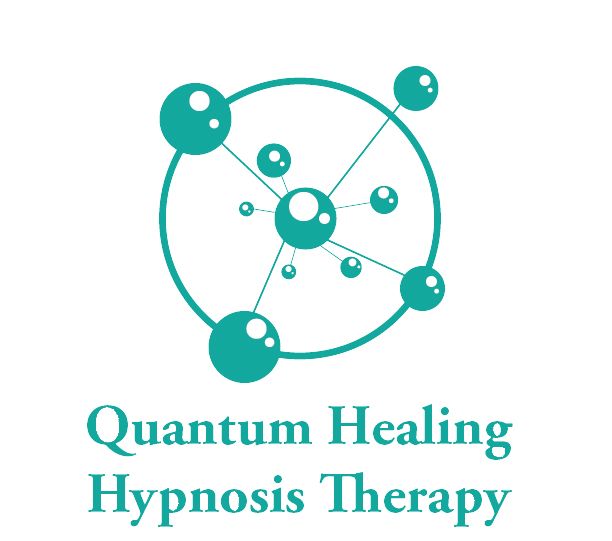 Regressive immersion hypnosis was successfully researched and applied by the American hypnotherapist Michael Newton, the result of these studies are his books:
Regressive immersion hypnosis was successfully researched and applied by the American hypnotherapist Michael Newton, the result of these studies are his books:
- ". The book describes 29 cases of people of different faiths and worldviews entering a superconscious state during a regressive hypnosis session. In the process of reading, answers to many questions are revealed: “Who meets the soul of a person?”, “What happens to the soul before the next incarnation?”, “How does the soul choose the next incarnation?”.
- « Destiny of the Soul ". The book is a continuation of the previous bestseller, but this time Newton worked with people who are in a spiritual search, more conscious, so the book turned out to be more rich and detailed.
- « Life between lives. Past lives and wanderings of the Soul ". The work is intended for the most part for hypnotherapists and contains techniques to help you remember past lives. For 30 years, M. Newton developed these methods and shares this in his book.
